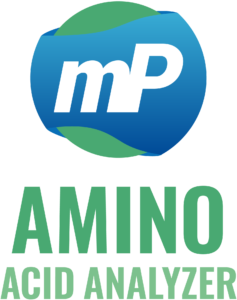Determination of essential amino acids in soybeans with Amino Acid Analyzer
Soybeans are native to China and cultivated all over the nation and the world. In China, it is one of the important food crops. With a history of 5,000 years of cultivation, the soybean was called Shu in ancient times and its main production area is Northeast China. Soybean is a crop whose seeds are rich in soybean protein, and is most commonly used to make various soy products, extract soybean oil, brew soy sauce and extract protein.
Soybeans are also a key crop in sustainable agriculture due to their nitrogen-fixing ability, which enhances soil fertility and reduces the need for chemical fertilizers (Herridge et al., 2008).
Soybean protein is a kind of plant protein, its amino acid composition is similar to that of milk protein. Except for methionine, the content of other essential amino acids in soybean protein are relatively rich. Soybean protein is a plant-based complete protein. In terms of nutritional value, it can be equivalent to animal protein. In terms of genetic structure, it is also the closest to human amino acids, so it is the most nutritious plant protein. Soybean protein has the incomparable advantages compared with animal protein. Though soybean protein has very little methionine, it does not contain cholesterol. Its unique physiologically active substance, isoflavones, has the effect of lowering cholesterol.
Isoflavones, such as genistein and daidzein, have been linked to cardioprotective, antioxidant, and anticancer properties, making soy protein a functional food ingredient (Messina et al., 2010).
Soybean protein is the only plant protein reported that contains 9 essential amino acids and the contents of which meet the needs of the human body. It is a recognized complete protein. Its protein evaluation index PDCAAS (protein digestibility corrected amino acid score, a method to measure protein quality) reaches the maximum evaluation value 1, which is the same as casein and egg protein. The essential amino acid content of soybean protein can meet the daily demand of the human body whether it is for preschool children between 2 to 5 years old or for adults. However, for infants, the addition of appropriate amounts of threonine, methionine, lysine and tryptophan can effectively increase the efficacy ratio and net protein ratio of soybean protein.
Due to its high PDCAAS score, soy protein is widely recommended in vegetarian and vegan diets as a high-quality protein source (Hughes et al., 2011).
The food that the modern population needs should be able to promote appetite, have no adverse side effects, and be rich in nutrients. Among the existing food groups, the soybean is the exact crop that meets the above requirements, and rich in raw materials. Drinks made with soybean protein are called “green milk” by nutritionists. Soybean protein has a significant lowering effect on people with high cholesterol. The content of arginine in soybean protein drinks is higher than that in milk, and the ratio of arginine to lysine is also appropriate.
This arginine-to-lysine ratio has been associated with positive effects on cardiovascular health by promoting nitric oxide production and improving lipid metabolism (Alvarado et al., 2017).
Soybeans are extremely rich in lipids and linoleic acid and contain no cholesterol, which can prevent cardiovascular disease in adulthood. Its rich lecithin can remove excess sterols from the blood, and is known as the “blood scavenger”.
Soy lecithin has also been shown to support liver health and modulate plasma lipid profiles in clinical studies (Rudkowska & Jones, 2007).

References:
- Herridge DF, Peoples MB, Boddey RM. “Global inputs of biological nitrogen fixation in agricultural systems.” Plant Soil. 2008;311(1-2):1-18.
- Messina M, Nagata C, Wu AH. “Estimated Asian soy isoflavone intake.” Nutr Cancer. 2010;62(5):457-467.
- Hughes GJ, Ryan DJ, Mukherjea R, Schasteen CS. “Protein digestibility-corrected amino acid scores (PDCAAS) for soy protein isolates and concentrate: criteria for evaluation.” J Agric Food Chem. 2011;59(23):12707-12712.
- Alvarado J, et al. “Dietary arginine-to-lysine ratio modulates cardiovascular risk factors in humans.” Nutr Metab Cardiovasc Dis. 2017;27(9):808-814.
- Rudkowska I, Jones PJ. “Lecithin and choline in health and disease.” Nutr Rev. 2007;65(3):125-133.

